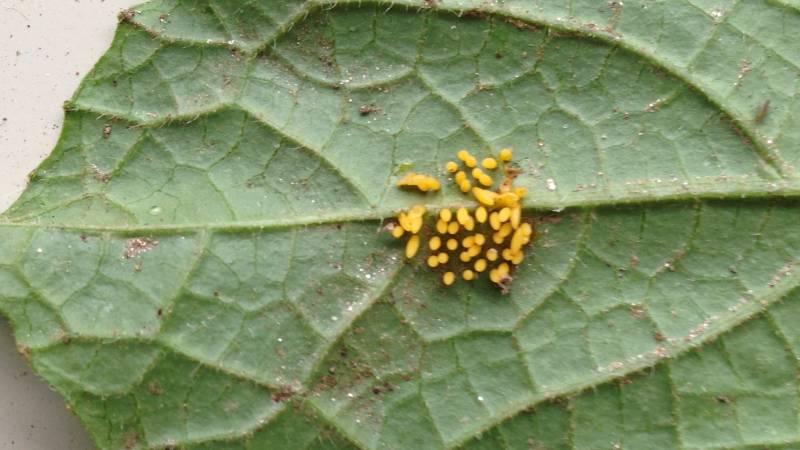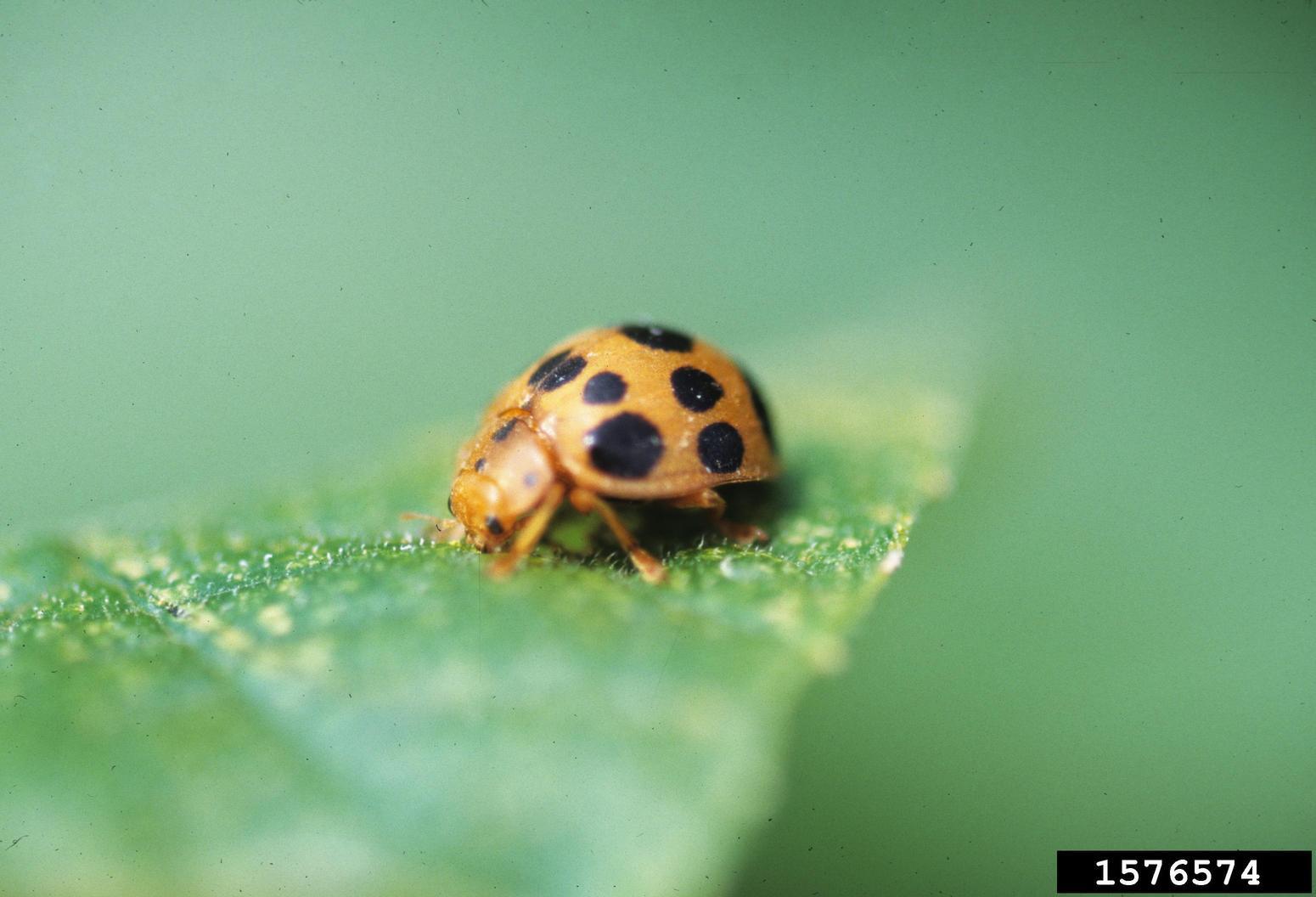Appearance
- This copper colored beetle resembles the Mexican bean beetle but is larger and has 14 spots as compared to 16 spots. It feeds on the tissue between leaf veins. Squash, cucumber, pumpkin, and squash may all serve as host plants.


Habits
- It feeds on the tissue between leaf veins.
Host Plants
- Squash, cucumber, pumpkin, and squash may all serve as host plants.
Prevention/Control
- Handpick adults, larvae, and egg masses.
- Applications of botanical insecticides, such as neem or pyrethrum can help control large populations. (These are botanical insecticides- they are derived from plants- and are classified as organic.)
- Floating row cover can be applied over transplants or newly emerged seedlings in situations where this pest appears every year. Remove the row cover once plants begin to bloom.
